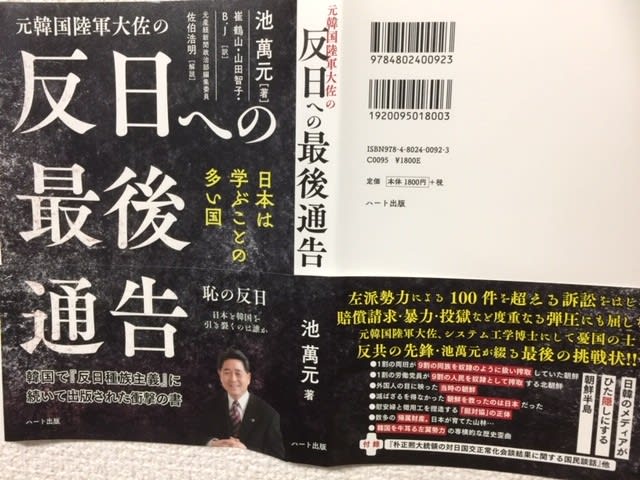The following is from an article by cultural anthropologist Yang Haiying that appeared in today's Sankei Shimbun under the title "The Chinese Communist Party: One Hundred Years of Becoming a Monster.
"A ghost is wandering around Europe. It is the ghost of communism.
It is a famous phrase from the beginning of "The Communist Manifesto," co-authored by Marx and Engels.
There are many theories about the meaning of the word "ghost." Still, I agree with the philosophical interpretation that it is a monster that has grown to a massive size by sucking human beings' living blood.
And the most powerful monster and the ghost of the 20th century is none other than the Chinese Communist Party (CCP).
As the party celebrates its 100th anniversary this year, it is necessary to look back at its history.
Japan is the birth father.
The ghost of the CPC was born in Japan.
Among its founders, Li Dajian was a graduate of the Political Science Department of Waseda University, and Chen Duxiu was trained at Seijo School in Shinjuku.
The other key members of the group all shared some experience of Japan, to a greater or lesser extent.
It was a standard ideological and political itinerary for Chinese intellectuals up to 1945 to read communist writings in Tokyo. The free spirit of modern times had taken root and launched a revolutionary movement upon their return.
Above all, the word "communism" itself was reimported from Japan.
I wonder if today's Chinese are aware of the fact that the name "People's Republic of China," which the CPC established in 1949, incorporates the modern ideological concepts of "people" and "republic" that was created by Japan.
The KMT was an identical twin of the Chinese Communist Party.
Its founder, Sun Yat-sen, had close ties with Japan, and his successors, such as Chiang Kai-shek, had studied in Japan.
The Chinese Communist Party (CCP), which revolted within the Republic of China and created the Soviet Republic of China in South China, recognized the right of self-determination of various ethnic groups in its constitution.
In its constitution, the CPC recognized the right of self-determination of various ethnic groups and advocated a republican policy of supporting the independence of Inner Mongolia, Tibet, and Xinjiang, at least on a federal basis.
False image
The Nationalist government, which had denied the independence or even the existence of the various ethnic groups, embarked on a campaign to clean up the CCP.
The defeated CPC referred to its ignominious flight as "anti-Japanese up north.
The slogan was to enter Inner Mongolia and fight the Japanese army in Manchukuo.
When Mao Zedong learned that the Inner Mongolians were seeking independence from China with the help of the Japanese, he issued the "Declaration of the Soviet Republic of China against Inner Mongolia" at the end of 1960, stating that the Inner Mongolians were descendants of Chinkis Khan and had the right to independence.
Believing Mao's proclamation, the Mongols did not attack the CPC troops "up north" and survived, occupying southern Inner Mongolia and Yan'an in northern Shaanxi Province.
Mao's troops were unwilling to go to the front lines where the Nationalist government forces were fighting, but they were good at propaganda.
He invited Edgar Snow, an American journalist, and communist sympathizer, to Yan'an and told him the story of his bravery in breaking the Nationalist army's siege.
Snow's The Red Star of China became an international bestseller. They created the myth that the CPC was the real anti-Japanese force, rather than the Nationalist government troops fighting to the death against the Japanese.
The book continued to harm post-war Japanese academia and citizens, creating the false image that a "righteous army had defeated Japan.
It is widely known today that, in reality, the CCP army did not fight against Japan but instead attacked the Nationalist government forces from behind, cultivating opium and selling poison to the people.
First of all, it denied self-determination, i.e., the right to secession, which had been promised to the various ethnic groups, and granted them only limited regional autonomy.
He plundered the land of the Han Chinese and the nomads' grasslands, and in 1958 he established the People's Corporation, a system reminiscent of the secret societies of the Han Dynasty, throughout the country.
As a result of this policy of public ownership, some 30 million people died of starvation.
Japan's Responsibility Needed
It was followed by the Cultural Revolution in 1966, which killed at least 1.1 to 1.6 million people.
340,000 Inner Mongolians who were tricked into believing that they would be given the right to secession were arrested, 120,000 were injured by violence, and 27,900 were killed.
It can say that the history of the founding party is full of dead bodies.
Isolated internationally, the CPC established diplomatic relations with Japan, the "father of the CPC," in 1972 and captivated Japanese politicians with its generosity performance, stating that no reparations were necessary.
The good people of Japan made a concerted effort to rebuild China, and a tremendous amount of aid, more than reparations, was poured into the country.
With Japan's help, the CPC developed a powerful army and moved from land to sea, fortifying the South China Sea as its sea and claiming the Senkaku Islands in Okinawa as its territory.
On land, they continue to oppress various ethnic groups.
In Inner Mongolia, it has deprived the people of their right to education in their native language.
In Hong Kong, which was returned to China by the British, the Chinese government has relentlessly suppressed the democratic movement of citizens and students.
It is well known that the new coronavirus from Wuhan, China, has caused a pandemic in the world since the end of last year with the addition of information hiding.
As the creator of the CPC, Japan has to face and fight the CPC resolutely.












